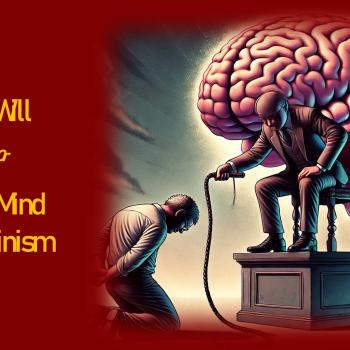How does Jesus save?
Part Five: Penal Substitution
ST 2005

How does Jesus save? Now, we’re ready for the fireworks. Criticisms of our next model, the Penal Substitution Theory or PST, explode like skyrockets on the Fourth of July. We’ll watch to see where those embers fall.
In the Christian Century, Anglican priest Rachel Mann detonates a theological bomb: “substitutionary atonement is an idolatrous account of redemption.”
So, what’s the problem? Princeton religion scholar Elaine Pagels reports her moral agony over penal substitution theory (Pagels, 2020, Chapter 8).
“What kind of God…? An all powerful God who, Christians say, ‘is love’ and ‘loves the world’, but who cannot, or will not, forgive human sin unless an innocent person–his own beloved son–is horribly tortured and slaughtered?”
Moral objections to the God depicted by PST are rife. What’s going on? Let’s turn to systematic theology on the doctrine of atonement.
Atonement in Public Systematic Theology
This is an exercise in systematic theology. Scripture depicts the atoning work of Jesus Christ in numerous sets of metaphors. The systematic theologian maps the numerous models or motifs of atonement and then compares them. [See Video: Models of Atonement]
Just a reminder, see where Penal Substitution Theory fits in our map of alternative atonement motifs. [See Video: Models of Atonement]
- Jesus as teacher of true knowledge
- Jesus as moral influence
- Christus Victor
- Jesus as victorious champion
- Jesus as liberator
- Jesus as Satisfaction
- Recapitulation Theory
- Satisfaction Theory
- Penal Substitution Theory
- Happy Exchange
- Jesus as the final scapegoat
The Ransom Motif
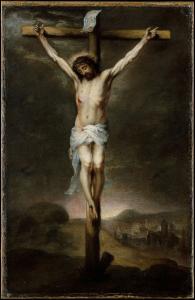
Jesus Christ, like a slave trader, has ransomed us sinners and set us free. Jesus “died as a ransom to set them free from the sins” (Hebrews 9:15). The imagery in this motif is that we sinners were enslaved. Now, a ransom has been paid. Now, we are liberated. But, to whom was this ransom paid? Satan? God? Anybody else?
Stephen Morrison calls this biblical model the “Ransom Theory” of atonement. “This theory essentially teaches that Jesus Christ died as a ransom sacrifice, paid either to Satan (the most dominant view) or to God the Father. Jesus’ death then acts as a payment to satisfy the debt on the souls of the human race, the same debt we inherited from Adam’s original sin.” Jesus paid for our freedom.
Who received payment? Was it Satan who held us in slavery to sin? When we turn to PST directly, it will be God who receives this payment.
A systematic theologian could justify granting the ransom theory its own place on the list of atonement models, to be sure. Yet, the slave-ransom-liberation motif relies on the same underlying logic as do Anselm’s Satisfaction Theory and Calvin’s Penal Substitution Theory. The overlap is palpable even if the models are not fully identical.
4.c. Penal Substitution Theory
Recall how Anselm’s model led to an either/or decision on God’s part: either punishment or satisfaction (aut poena aut satisfactio). The imbalance in the cosmic order could be righted in one of two ways: either through punishment and denial of blessedness or through an act of satisfaction whereby an offering is rendered up that is greater than the act of disobedience. It is important to note the either/or. Either punishment or satisfaction (aut poena aut satisfactio). God does not want to follow the road of punishment because God’s purpose is to bestow blessedness. Therefore, satisfaction becomes the preferable solution.
When we get to the Reformation and John Calvin (1509-1564), this changes. Now, punishment becomes the means for satisfaction. Punishment becomes the fee paid for the ransom.
Just to reiterate, PST is one atonement model among many. It is not THE atonement theory. William Lane Craig reminds us of this perspective.
“Penal substitution is a theory that belongs categorically (and prominently) to those so-called restitution models of atonement. A model of atonement is a broad category that is representative of how several theories of atonement function. A theory, like penal substitution, refers to a more narrowly worked out, systematically detailed instance of an atonement model. “
Yet, we attend to PST in more detail because it’s here that we witness the fireworks.
John Calvin’s Atonement Model
Does God the Father really love me? Or, was he merely paid off? Did the suffering of Jesus appease God’s wrath so that God the Father now only grudgingly treats me graciously? Are these the teachings of Penal Substitution Theory?
Even if Philip Melanchthon was the first systematic theologian of the Protestant Reformation, certain John Calvin was the greatest. When it comes to atonement, Calvin’s framework is not cosmic justice but rather one of appeasement of divine wrath. We must seek ways and means “to appease God—and this demands satisfaction” (Calvin, Inst.II.xvi.1). God was “our enemy until he was reconciled to us through Christ…apart from Christ, God is, so to speak, hostile to us” (Calvin, Inst.II.xvi.2).

A mechanism of expiation and propitiation defines the divine-human interaction, in Calvin’s rendering. “The Father destroyed the force of sin when the curse of sin was transferred to Christ’s flesh. Here, then, is the meaning of this saying: Christ was offered to the Father in death as an expiatory sacrifice that when he discharged all satisfaction through his sacrifice, we might cease to be afraid of God’s wrath” (Calvin, Inst.II.xvi, 6).
In our stead, God’s own Son “bore the weight of divine severity, since he was stricken and afflicted [cf. Isa. 53:5] by God’s hand and experienced all the signs of a wrathful and avenging God” (Calvin, Inst.II.xvi.11). Or, Jesus Christ “appeased God by taking upon himself the penalty to which we were subject” (Calvin, Inst.II.xvii.4).
On the one hand, Jesus Christ was punished by God in our place to appease divine wrath and to make satisfaction.[1][2] Yet, on the other hand, the Easter resurrection sounds the trumpets of the victorious champion motif. “Through his death, sin was wiped out and death extinguished; through his resurrection, righteousness was restored, and life raised up, so that—thanks to his resurrection—his death manifested its power and efficacy in us” (Calvin, Inst.II.xvi.13).
Whereas the Christus Victor model sees Christ as rescuing us from evil, Calvin’s model sees Christ as rescuing us from God the Father. The Jesus-as-victorious-champion variant rescues us from sin, death and the devil. And, the Jesus-as-liberator variant rescues us from cultural, political and economic oppression. In Calvin’s model, in sharp contrast, we need rescue from God’s judgment, wrath, and condemnation.
Do we need to be saved from God?
“In this [Penal Substitution Theory] view,” writes Progressive Keith Giles, “Jesus mostly saves us from His Father, not from our sins or from hell. This also paints God as a monster who responds to his children with anger and fierce violence rather than with love and compassion.” Really?
The grace of God is not relevant until it’s placed against the wrath of God,“ trumpets Patheos evangelical columnist Jack Wellman. “We are saved from God! And more precisely, we are sparred [sic] the wrath of God . . . Without your trusting in Christ, the wrath of God that was placed on Jesus will then be placed on you.” Hearing this from the pulpit would send me cowering to hide in a closet.
Stephen Morrison sums up PST. “Jesus Christ has been punished in the place of the sinner, in this way meeting the retributive requirements of God’s justice. This legal balancing of the ledgers is at the heart of this theory, which claims that Jesus died for legal satisfaction. It’s also worth mentioning that in this theory the notion of imputed righteousness is postulated.” You and I are not actually just or sinless. But, by grace God imputes justness or sinlessness to us. At least according to the Reformation theologians who relied on the forensic imagery.
Might a systematic theologian object? Yes.
Progressive Christian columnist Matthew Distefano objects. This Penal Substitution Theory, argues Distefano, makes God into something other than loving, gracious, and forgiving. Why should we have to be saved from God when the gospel tells us that God saves us from sin, death, and the power of the devil? So, Distefano turns to other atonement models which proffer what he deems a healthier understanding of God.
Patheos columnists line up to throw biblical and theological darts at Penal Substitution Theory. Roman Catholics William Droel and Pascal-Emmanuel Cobry along with Progressives Emma Higgs, Roger Wolsey, and Christian Piatt aggressively fling missiles at PST. Progressive Keith Giles claims that if PST is true, then we must rewrite John 3:16 to read: “for God so hated the world.” Among the defenders of PST we find evangelicals Geoff Holsclaw and Owen Strachan plus Lutheran Gene Veith. Why are the guns blazing?
Does Penal Substitution Theory sponsor divine child abuse?
In a previous post expositing the satisfaction model, we reported on the objection raised by some feminist theologians that satisfaction—and now PST too–describe divine child abuse. and, worse, atonement theology inspires human child abuse in families.

Methodologically, feminist theologians are concerned not just with the rational content of a theological theory, but also with the cultural effect of its imagery. According to Deanna Thompson, “feminist theologians are concerned not just with theological language itself, but also with the effective history of the images and symbols contained in the discourse” (Thompson 2022, 103)
So, the reason Joanne Carlson Brown and Rebecca Parker want to do away with atonement theory is that the imagery is damaging. They contend that “the image of God the father demanding and carrying out the suffering and death of his own son has sustained a culture of abuse and led to the abandonment of victims of abuse and oppression. Until this image is shattered, it will be almost impossible to create a just society” (Brown 1989, 9). Rita Nakashima Brock declares that it is the cross of Christ itself that needs redeeming (Brock 1988, 56).
Womanist theologian Delores Williams asks rhetorically, “Can there be salvific power for black women in Christian images of oppression (for example, Jesus on the cross) meant to teach something about redemption?” (Williams, 2013, 144). Anglican systematic theologian Katherine Sonderegger similarly surmises, “A Christian theology that honors sacrifice…must reckon closely with the dangerous alliance of violence and self-offering, of ritual killing and feasting” (Sonderegger, 2020, 2: 405). In sum, one ginormous problem with Penal Substitution Theory is its imagery of vicarious sacrifice, human bloodshed, and divine wrath.
Within systematic theology, there is no metaphysical mechanism whereby vicarious human suffering effects forgiveness, justification, or salvation. “Too often Christians have treated the sufferings of Christ as some kind of cosmic legal transaction with God to pay for the sins of humanity,” quetches Rosemary Radford Reuther, “as though anyone’s sufferings and death could actually pay for others’ sins!”(Reuther, 1981, 27). Rejection of a cosmic mechanism spins into an ethical priority for Reuther. “Liberation Christians say that God does not desire anyone’s sufferings…Suffering, death and poverty are evils. God comes not to sanctify, but to deliver us from these evils” (Reuther, 1981, 28).
Penal Substitution Theory has its defenders
The accusation of divine child abuse perpetrated by a wrathful and violent God has ignited the recent display of theological fireworks. In his Patheos post, “Atonement and Divine Child Abuse,” Scot McKnight disabuses the abuse abusers. Atonement is an event in the perichoresis of God’s trinitarian love.

“This accusation fails to comprehend that entering into death, willingly and out of love, is the act of God entering into the fullness of the human condition, including death. Once again, this is out of love: the Son entered into the suffering and death of humans because Father, Son and Spirit love each one of us and want to go down into the depths with us in order to lift us from death into life.”
In Calvin, atonement looks like it is an event precipitated by God’s wrath. According to today’s PST defenders, atonement is an event within the trinitarian life of love. Evangelical sockdolager J.I. Packer will certainly throw the love dart with force.
J.I. Packer’s Atonement Model
How can we save PST? How can we recognize that, despite the wrath and appeasement imagery, God is gracious and loving? This is what J.I. Packer attempts to do for us.
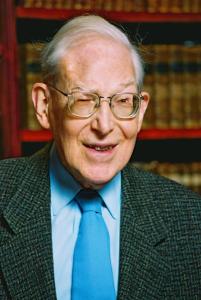
British born evangelical taskmaster James Innell Packer (1926-2020), a professor at Regent College in Vancouver, adds precision to Penal Substitution Theory. In his, “The Logic of Penal Substitution,” J. I. Packer reminds us of the historical development from Anselm to the Reformation.
“What the Reformers did was to redefine satisfactio (satisfaction), the main mediaeval category for thought about the cross. Anselm’s Cur Deus Homo?, which largely determined the mediaeval development, saw Christ’s satisfactio for our sins as the offering of compensation or damages for dishonour done, but the Reformers saw it as the undergoing of vicarious punishment (poena) to meet the claims on us of God’s holy law and wrath (i.e. his punitive justice). “
Packer recognizes the move from biblical exegesis to doctrinal formulation by the systematic theologian. Further, he recognizes that PST is one model among many. Penal Substitution Theory…
“…is a Christian theological model, based on biblical exegesis, formed to focus a particular awareness of what Jesus did at Calvary to bring us to God. If we wish to speak of the ‘doctrine’ of penal substitution, we should remember that this model is a dramatic, kerygmatic picturing of divine action, much more like Aulén’s ‘classic idea’ of divine victory.”
Packer thinks of PST as an expression of the gospel message that we are saved by divine grace.
“Reasoning thus, faith grasps the reality of God’s free gift of righteousness, i.e. the ‘rightness’ with God that the righteous enjoy (cf. Rom. 5:16f.), and with it the justified man’s obligation to live henceforth ‘unto’ the one who for his sake died and rose again (cf. 2 Cor. 5:14).
This analysis, if correct, shows what job the word ‘penal’ does in our model. It is there, not to prompt theoretical puzzlement about the transferring of guilt, but to articulate the insight of believers who, as they look at Calvary in the light of the New Testament, are constrained to say, ‘Jesus was bearing the judgment I deserved (and deserve), the penalty for my sins, the punishment due to me’ — ‘he loved me, and gave himself for me’ (Gal. 2:20).”
Packer finds accusations of cosmic child abuse to be silly, on the grounds that this complaint fails to acknowledge that atonement derives from God’s gracious love expressed in trinitarian perichoresis.
“Since the Father’s central purpose in it all was and is to glorify and exalt the Son as Saviour and Head of a new humanity, smartypants notions like ‘divine child abuse’, as a comment on the cross, are supremely silly, and as irrelevant and wrong as they could possibly be. since the Father’s central purpose in it all was and is to glorify and exalt the Son as Saviour and Head of a new humanity, smartypants notions like ‘divine child abuse’, as a comment on the cross, are supremely silly, and as irrelevant and wrong as they could possibly be.”
Contemporary evangelical theologian Roger E. Olson would agree with Packer in defense of PST.
“This theory [Penal Substitution Theory] has, in recent years especially, been labeled ‘divine child abuse’ and an example of the ‘myth of redemptive violence’. Behind every one of those criticisms is the idea that Jesus Christ was an innocent human being on whom God took out his wrath. These critics forget that, in traditional theology, Jesus Christ was God voluntarily suffering our punishment because he loves us and wants to forgive us.”
N.T. Wright on Penal Substitution Theory
Yes, of course, God loves us and wants to forgive us. Yet, some distortions have crept into PST. At least according to acclaimed New Testament historian N.T. Wright. Wright responds on YouTube to the question: “Do you believe in penal substitution?”
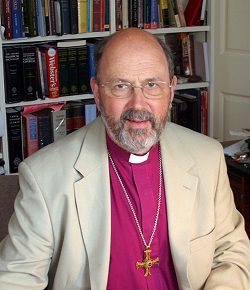
What does Wright answer? He refers us immediately to the gospel-in-miniature, John 3:16. In John 3:16, we read that God loved the world and gave his son. But, unfortunately, this has become distorted. It is now heard by many to say that God hated this world and punished his son out of divine wrath.
What is a better interpretation? Wright says that God condemned sin. But, God did not condemn Jesus. Jesus dies as the representative substitute taking condemnation unto himself. This is God’s work of establishing new creation.
“At this point, I have to disagree with Wright,” says Progressive Christian Patheos blogger Adam Erickson. Why? “Because a genuine Penal Substitutionary Atonement theory cannot be a theology. Rather, it must be an anthropology. In other words, Penal Substitutionary Atonement theory describes what humans do, not what God does.”[3][4]
Erickson adopts an alternative atonement model. He affirms the scapegoat theory of René Girard and Mark Heim. We will look at Jesus as the final scapegoat in a future post.
Conclusion
 John Calvin’s Penal Substitution Theory of Atonement has endured through the centuries. It is alive and well today in evangelical circles. But, in recent decades, PST has become a dart board. Liberal Protestants throw accusations of depicting a wrathful God at it. Feminists throw accusations of child abuse at it. Girardian’s throw accusations of violence at it.
John Calvin’s Penal Substitution Theory of Atonement has endured through the centuries. It is alive and well today in evangelical circles. But, in recent decades, PST has become a dart board. Liberal Protestants throw accusations of depicting a wrathful God at it. Feminists throw accusations of child abuse at it. Girardian’s throw accusations of violence at it.
Defenders of PST shout over the din that God is gracious, loving, and caring. And, PST proves it. PST is one translation of the Bible’s good news into systematic theology.
My central observation is that God is not the perpetrator of Jesus’ suffering. Rather, God is the victim. One Patheos columnist, James Werning, seems to agree. ““God would never torture anyone. That was not his brutal plan, to hire assassins to murder his only son. You have it backwards! God wasn’t killing man. Evil men were killing God!”
“He, the holy Son of God in sinless human flesh, has endured what Calvin called ‘the pains of a condemned and lost person’ so that we, trusting him as our Saviour and Lord, might receive pardon for the past and a new life in him and with him for the present and future,” J. I. Packer reminds us.
▓
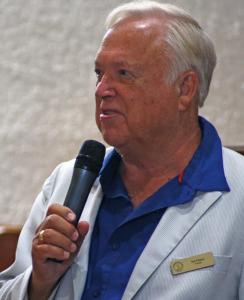
Ted Peters is a Lutheran pastor and emeritus seminary professor, teaching theology and ethics. He is author of Short Prayers and The Cosmic Self. His one volume systematic theology is now in its 3rd edition, God—The World’s Future (Fortress 2015). His book, God in Cosmic History, traces the rise of the Axial religions 2500 years ago. He has undertaken a thorough examination of the sin-and-grace dialectic in two works, Sin: Radical Evil in Soul and Society (Eerdmans 1994) and Sin Boldly! (Fortress 2015). Watch for his forthcoming, The Voice of Christian Public Theology (ATF 2022). See his website: TedsTimelyTake.com.
Ted Peters’ fictional series of espionage thrillers features Leona Foxx, a hybrid woman who is both a spy and a parish pastor.
▓
[1] The Governmental Theory of Atonement has been proffered as an alternative to Penal Substitution Theory. Accordingly, Jesus Christ was not punished on behalf of the human race. Instead, God publicly demonstrated his displeasure with sin by punishing his own sinless and obedient Son as a propitiation. Stephen Morrison treats the governmental model.[2] William Lane Craig emphasizes that Christ himself was not punished. Rather, he endured the suffering which would have been our just punishment had it been inflicted on us. Thereby, Christ frees us from our punishment. It is false that God punished an innocent person for our sin.
[3] Evangelical Peter Leithart is not throwing darts. “Among the many accusations that get lodged against Wright, one is that he’s squishy or un-Evangelical on the atonement. He criticizes penal substitution in this book, largely because he thinks it gets the story off on the wrong foot, treating Adam’s situation as a matter of law rather than a matter of vocation. I’m not convinced his criticisms entirely hit home….He speaks of substitution, of bearing sin, of suffering punishment on behalf of others, of Jesus dying for our sins. He insists that we need to understand all those truths within the broad sweep of the purpose and destiny of humanity and creation—and he’s right—but that broader context doesn’t mean he’s abandoned the rest of it.”
[4] Critics of PST love to point out how Jesus asks us to simply forgive others, no strings attached. I write this Patheos post in 2022 when U.S. President Joe Biden is advocating a $20,000 student loan forgiveness program for millions saddled with student loan debt. Believe it or not, some critics of the president complain that this is unfair. Allegedly, this forgiveness program is unfair to those individuals who have already paid their college debts. Reminiscent of Jesus’ parables of the workers in the vineyard (Matthew 20) or the Prodigal Son (Luke 15)? What is President Biden’s defense? “Is it fair to people who, in fact, do not own multi-billion-dollar businesses if they see one of these guys getting all the tax breaks? Is that fair? What do you think?” Biden shot back. Biden’s logic strains credulity. Be that as it may, forgiveness is an act which is beyond what the forensic mind can justify.
Bibliography
Allen, David. 2022. “A Critique of Limited Atonement.” In Calvinism: A Biblical and Theological Critique, by eds David L Allen and Steve W Lemke, 71-128. Nashville TN: B&H Academic.
Althaus, Paul. 1966. The Theology of Martin Luther. Minneapolis MN: Fortress.
Anselm. 1966. Cur Deus Homo. LaSalle IL: Open Court.
Aulén, Gustaf. 1967. Christus Victor. New York: Macmillan.
Brock, Rita Nakashima. 1988. Journeys of the Heart. New York: Crossroad.
Brown, Joanne Carlson, and Rebecca Parker. 1989. “For God So Loved the World?” In Christianity, Patriarchy, and Abuse, by eds Joanne Carlson Brown
and Carole R. Bohn. New York: Crossroad.
Calvin, John. 1535. Institutes of the Christian Religion . Tr. Thomas Norton: https://www.ccel.org/ccel/calvin/institutes.toc.html.
Girard, René. 1978. Things Hidden Since the Foundation of the World. Stanford CA: Stanford University Press.
Hultgren, Arland. 1987. Christ and His Benefits: Christology and Redemption in the New Testament. Minneapolis MN: Fortress.
Kant, Immanuel. 1960. Religion within the Limits of Reason Alone. New York: Harper.
Luther, Martin. 1955-1986. LW. Luther’s Works, American Edition, 55 Volumes: St. Louis and Minneapolis: Concordia and Fortress.
Pagels, Elaine, 2020. Why Religion? A Personal Story. New York: Ecco.
—. 2016-2019. The Bondage of the Will (1525) / The Annotated Luther, 6 Volumes. Minneapolis MN: Fortress Press.
Peters, Ted. 2015. God–The World’s Future: Systematic Theology for a New Era. 3rd. Minneapolis MN: Fortress Press.
Ray, Inna Jane. 1997. “The Atonement Muddle.” Journal of Women and Religion, 15.
Reuther, Rosemary Radford. 1981. To Change the World. New York: Crossroad.
Sonderegger, Katherine. 2015, 2020. Systematic Theology. 2 Volumes. Minneapolis MN: Fortress.
Tanner, Kathryn. 2001. Jesus, Humanity, and the Trinity. Minneapolis MN: Fortress.
Trelsted, Marit. 2010. “Putting the Cross in Context: Atonement Through Covenant.” In Transformative Lutheran Theologies, by ed Mary J Streufert, 107-122. Minneapolis MN: Fortress.
Thompson, Deanna, 2022. “Becoming a Feminist Theologian of the Cross,” Encounters with Luther, eds., Kirsi Stjerna and Brooks Shramm. Louisville KY: Westminster John Knox.
Trost, Lou Ann. 1994. “On Suffering, Violence, and Power.” Currents in Theology and Mission 21:1 35-40.
Williams, Delores. 2013. Sisters in the Wilderness: The Challenge of Womanist God-Talk. Maryknoll NY: Orbis.





